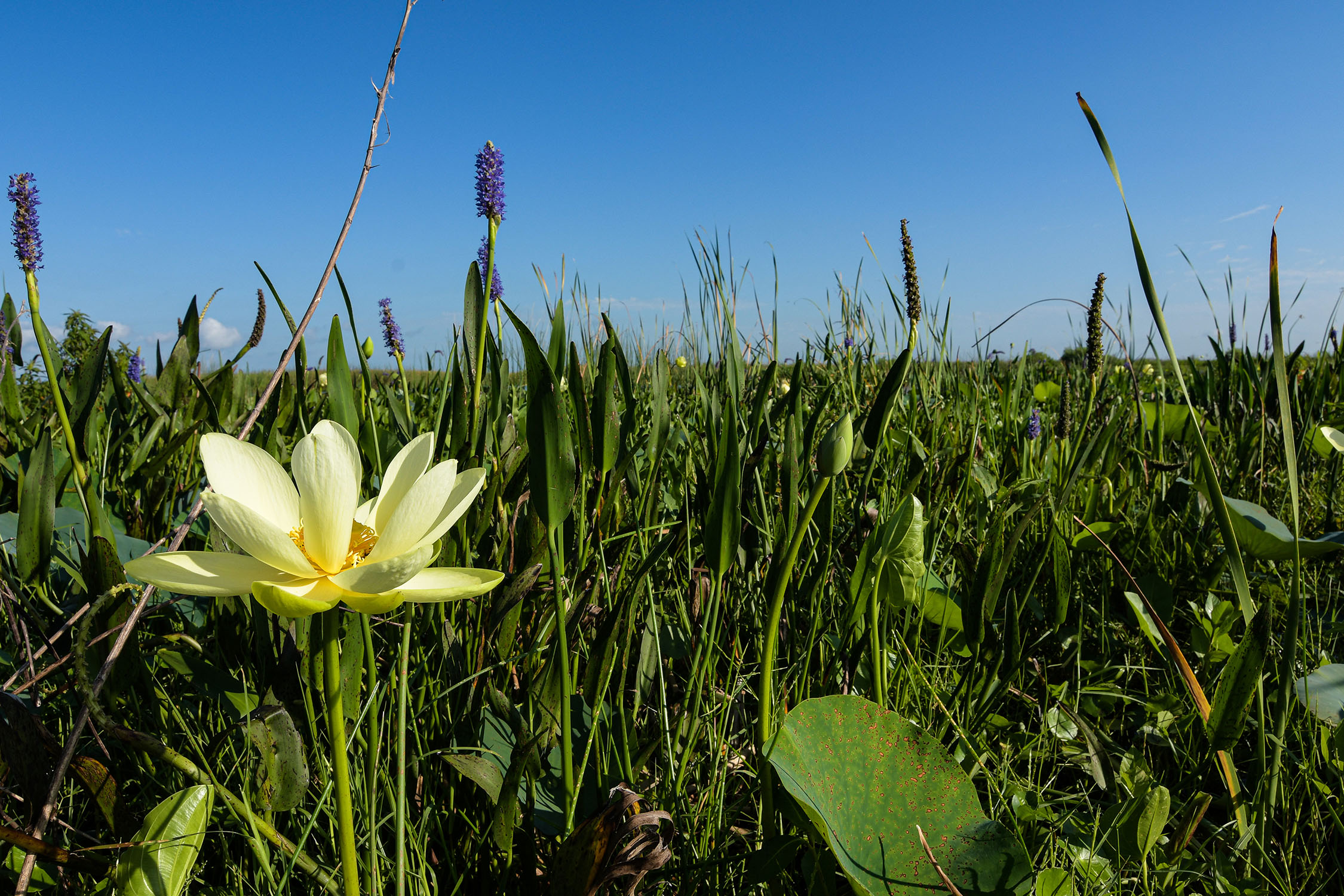| |
 |
| |
A 1975 map shows the complex system of levees, canals, and pumping stations that transformed South Florida in the first half of the twentieth century. The Central and Southern Florida Project reduced catastrophic flooding in the region, but it also led to many unintended consequences. Library of Congress
|
In the first half of the twentieth century, various schemes that partially drained areas of the Everglades created problems that few people foresaw, including soil subsidence, saltwater intrusion into freshwater wells, and the destruction of plant and wildlife in south Florida. With the advent of the modern environmental movement and the passage of the Clean Water Act in 1972, state and federal environmental agencies began looking for ways to balance the needs of the natural environment in south Florida with urban and agricultural centers that were increasingly encroaching on the Everglades. Congress ultimately reached out to the U.S. Army Corps of Engineers for much of the engineering work required to achieve such balance and to undo some of the harm.
Early restoration efforts focused on the Kissimmee River, which once meandered for a hundred miles through central Florida. Its floodplain, reaching up to two miles wide, was inundated for long periods by heavy seasonal rains. Wetland plants, wading birds, and fish thrived there. Because prolonged flooding caused severe impacts to human habitation, Florida officials began asking Congress for assistance in the 1950s. Within a decade, Congress tasked USACE with cutting and dredging the Kissimmee River as part of a vast program of water management in south Florida. The project was beneficial in that it did reduce flooding, but it also harmed the river-floodplain ecosystem.
In accordance with the Clean Water Act and a 1976 Florida law to restore water quality in the Kissimmee River Basin, USACE spent the next decade conducting studies and negotiating among environmentalists who advocated for marshland restoration and farmers and ranchers who worried that flooding the marshlands would threaten their agricultural activities. Initially focused on restoring the main stem of the Kissimmee, the Corps’ efforts by the late 1980s had grown to include watershed restoration in the entire Kissimmee River Basin. State officials and the South Florida Water Management District, the local sponsor for Jacksonville District projects, quickly leant their support to these more comprehensive efforts. Chief of Engineers Lt. Gen. Henry J. Hatch worked with U.S. Senator Bob Graham of Florida on a separate authorization and funding from Congress to dechannelize and repair the river. Under provisions of the Water Resources Development Act (WRDA) of 1990, USACE conducted a new study, held hearings, and submitted a report to Congress on the desirability and feasibility of restoring the river. Congress then approved the restoration project in the 1992 WRDA. USACE committed not only to dechannelizing the river but to restoring the entire Kissimmee River watershed. The resulting project became a model for ecosystem management in south Florida.
In 2000, the Corps of Engineers undertook an even broader initiative – the Comprehensive Everglades Restoration Plan (CERP) – to “restore, preserve, and protect the south Florida ecosystem while providing other water-related needs of the region, including water supply and flood protection.” At a cost of more than $10.5 billion and with a timeline stretching out several decades, CERP was the largest restoration project ever undertaken in the United States. By 2010, USACE had restored continuous water flows to approximately 19 of 44 miles of the Kissimmee River and had restored 6,500 acres of floodplain wetlands. The response of the natural system greatly exceeded expectations. Many species of ducks and wading birds that had not been present during pre-construction surveys – including the ring-necked duck, American avocet, and black-necked stilt –returned to the Everglades.. By 2018, $1.2 billion in federal funds had been allocated to CERP, not including billions more from federal and state sources for other restoration programs and projects in the Everglades.
 |
|
 |
|
Backfilling operations during the Kissimmee River Restoration project help dechannelize the river, 2016. The project restored more than 44 miles of the historic, meandering Kissimmee River and slowed the flow of water into Lake Okeechobee. South Florida Water Management District Photo, DVIDS 2961303
|
|
On November 20, 2015, federal, state, and local officials celebrated the start of a major construction contract for the reservoir component of the C-44 Reservoir and Stormwater Treatment Area project, a critical element of the effort to restore America’s Everglades. Part of the Comprehensive Everglades Restoration Plan (CERP), the reservoir will help capture nutrient runoffs and improve water quality in the Indian River Lagoon, which is home to more than 3,000 species of plants and animals and is considered the most biologically diverse estuarine system in the continental United States. DVIDS 2299876
|
 |
|
 |
| American lotus and pickerelweed were among the 24 native plants found on Lake Okeechobee, the liquid heart of the Everglades, in 2020. Through CERP, the U.S. Army Corps of Engineers and its partner agencies have been working together to conserve and restore Florida’s ecosystems, including Lake Okeechobee, for more than two decades. U.S. Army Photo by Brigida I. Sanchez, DVIDS 6443105 |
|
A kitten born in the wild to a rescued and released Florida panther, 2013. This panther kitten was discovered in the Fakahatchee State Park Preserve, just east of the Picayune Strand Restoration Project area. Part of CERP, the Picayune project connects surrounding state and federal lands, including nature preserves and wildlife areas. It provides contiguous land area as potential habitat for many animal species, including the endangered Florida panther. Only around two hundred of these animals remain in the wild. Florida Fish and Wildlife Conservation Commission Photo, DVIDS 992367
|
* * *
October 2022. No. 159.